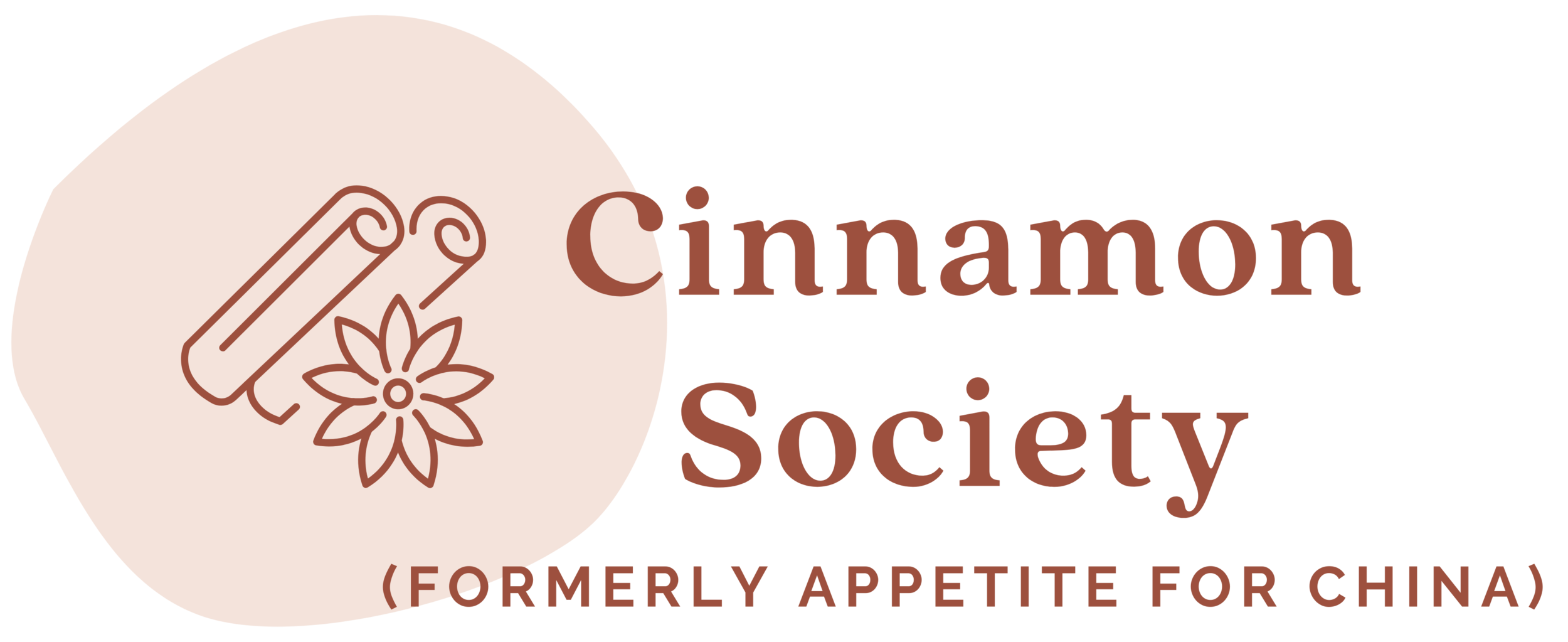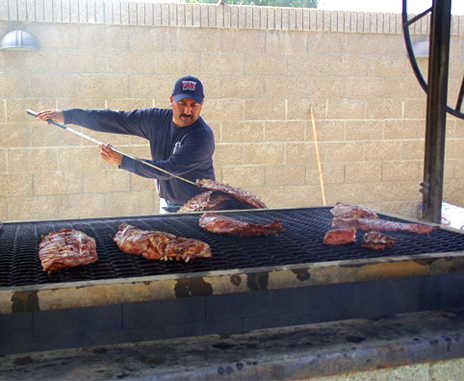Foodbuzz 24, 24, 24: Cowboy Supper - California's Native BBQ
With all due respect to Memphis and Kansas City, Californians know the nation's best barbecue may be in their own backyard. I've spent enough time in the Central Coast to know that no occasion is too small for Santa Maria-style barbecue. Fundraisers, Quinceañeras, and Saturdays are all reasons to fire up the 50-gallon oil drum grill and slow cook enough beef for the whole town. For my Foodbuzz 24, 24, 24 event this month, I attended to a local fundraiser for spare ribs cooked on a giant grill, then at night, made my own tri-tip feast.
So what exactly is Santa Maria-style barbecue? Well, legend has it that California's barbecue culture dates back to the early 19th century, when vaqueros ended hard days of cattle branding with feasts of fresh steer, bread, and beans. And they were economical too, these cowboys. When they couldn't bear to toss the triangular ends of their sirloins, they made the tri-tip a regional Cal-Mex speciality.
These days, on any weekend, parks and parking lots from Santa Maria up north to Salinas are filled with heavenly, protein-enriched smoke. These grills are at least at least 4 feet long, with wheel cranks to lower and raise the giant meat loads. A grill's size is measured by the number of sirloin steaks you can fit on each. There are "40's", "80's", even "100's". Traditionally the de facto fuel was California red oak, but now most other woods can be used. Sirloin steaks and tri-tips are the most popular cuts to toss on the grill, but you can also cook ribs and whole chicken this way.
As someone who had spent the past two years in China, I really missed meat that wasn't pre-cut into little cubes.
We started the day at a fundraiser for the Greenfield Fire Station, about half an hour south of Salinas and 10 minutes from where I was staying in King City. The local firemen were already busy cooking a massive number of spare ribs the signature crank grills. They had sold 350 meals in the first hour alone. Pepe, a retired firefighter, had been grilling at this event for the past 14 years. He and the other firemen carefully seared each side of the ribs until ready, then speared them over to the cutting table. And what was in this bucket of marinade that made the ribs smell so good? Butter, beer, and a mixture of secret spices were the only answers I could wrestle from them.
The firemen added some barbecue sauce to our ribs. But traditionally the only sauce you'll get is salsa verde and pinquito beans. Instead of grits and collard greens, in CA you get fresh garlic bread and salad with Newman's Own salad dressing. But the asceticism has a purpose: you need few distractions to enjoy the most luscious beef this side of the Rockies.
The firemen also had an adorable mini crank grill, perfect for the backyard, camping, and toddler BBQ lessons.
Later, back at the figurative ranch, we continued the all-day meat fest on the backyard grill. I pulled out the huge tri-tip purchased from a local Mexican butcher that had been marinating in a mixture of oil, salt, pepper, and minced garlic. You can also do a dry rub with salt, pepper, and garlic powder, but the marinade seems to allow the garlic flavor to better seep into the meat.
I recently discovered that California buys 80% of the nation's tri-tip, with another 15% going to other Western states. (Bobby Flay, as New York's tri-tip evangelist, apparently buys the rest.) This bottom piece of the sirloin is the perfect cut to grill at home; its size cuts the cooking time down to half an hour. You'll want your butcher to leave a little fat on the meat to add moisture during cooking. I first seared the outside over the flame, then cooked it over low heat until it was medium-well. (See recipe below.)
Even the guests who normally prefer their beef bloody and moo-ing agreed the tri-tips met their standards for tenderness.
For the sides, as per tradition, I slathered butter and garlic over "French bread", which in California is about three times fatter and fufflier than a normal baguette. Pinquito beans, the variety that may only be grown south in Santa Maria, are hard to find, so I substituted with the slightly larger pinto beans. A little garlic, bacon, tomato paste, mustard, sugar, and chili powder give these beans a tangy, sweet, and smoky dimension.
Salsa verde and grilled corn rounded out the meal. And no beer for this barbecue crowd. Here, even the burliest ranchers end up sipping the local Central Coast wines with their barbecue.
I guess if the rest of the country never discovers tri-tip, Californians will just have more for themselves.
__________________________________
Santa Maria-Style Tri-Tips
Serves 4
- 1 beef tri-tip roast (about 2 lbs)
- 2 tablespoons olive oil
- 4 to 5 cloves minced garlic
- 1 teaspoon salt
- 1 teaspoon ground pepper
- Trim excess fat from the roast, but leave a little fat on one side so the meat stays moist and tender during grilling. Rub the tri-tip all over with oil, garlic, salt, and pepper. Marinate in the fridge for 1 to 2 hours (30 minutes at a bare minimum), or overnight for more flavor.
- Sear meat over flames for 2 to 3 minutes on each side to get a nice, dark crust and seal in juices. Cook for another 20 to 30 minutes over low heat to the desired degree of doneness. (Check with a meat thermometer. Roasts go from rare to well-done very quickly, within 10 minutes.)
- Remove tri-tip from heat and let it rest for 5 to 10 minutes. Slice into thin slices and serve with salsa or barbecue sauce.
__________________________________
California-Style Pinquito Beans
Serves 4
- 1 pound pinquito beans (or substitute pinto beans)
- 4 strips bacon, diced
- 2 to 3 cloves garlic, finely chopped
- 1/4 cup tomato puree
- 1/2 tablespoon dry mustard
- 1 tablespoon sugar
- 1/2 tablespoon ground chili powder (add more for smokier beans)
- Salt to taste
- Pick through beans to remove any debris. Soak in a pot of water overnight. (If you're pressed for time, use this quick-soak method.) Drain beans, cover with 3 inches of fresh water, and bring to boil. Lower heat and simmer beans for 30 to 40 minutes.
- In a medium-sized pan, sauté bacon until lightly browned. Add garlic and sauté another 2 minutes. Add tomato puree, mustard, sugar, and chili powder. Simmer for 30 minutes to let flavors soak in. Salt to taste.









